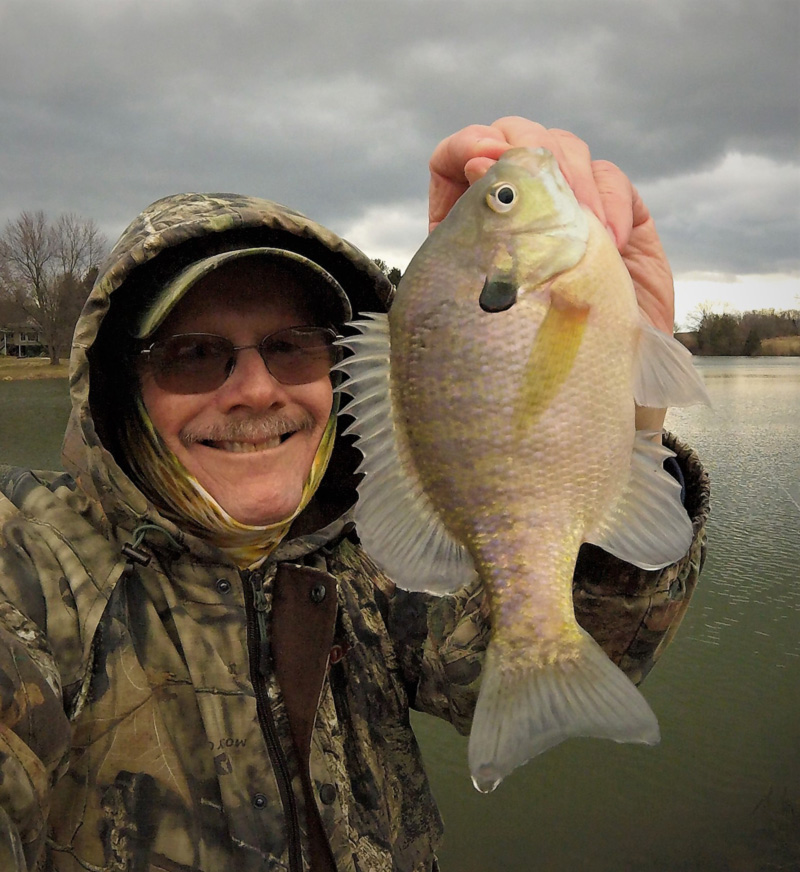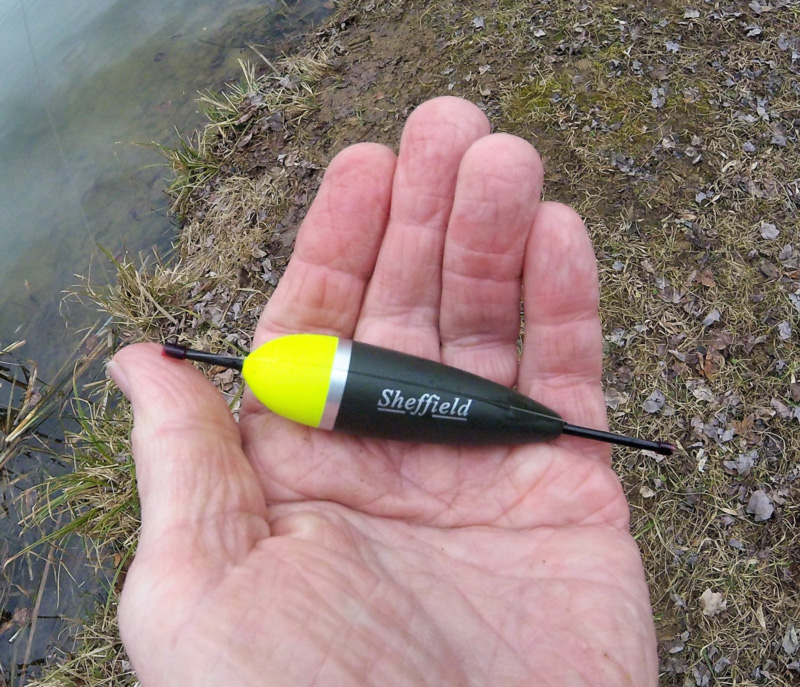When ice comes off the ponds and lakes, bluegill fishing gets hot. They’re out there, cruising around in vast, slow-moving schools and grazing like cattle on zooplankton and chironomids. They sometimes hover higher in the water column as the sun sets, and then drift quietly down to the darker deep when night falls. On windy days, shortly after skim-ice has left the surface of lakes and ponds, they cruise in shallow and feel the solar warmth… a relief from a long, cold winter. When it rains from a warmer system for a few days they elevate to near the surface, becoming more active than other times, often venturing up into shallow coves with incoming creeks. But for the most part, ice-out bluegills are waking up, yawning, and emerging from their zombie-like winter state and sipping a variety of tiny aquatics that fall victim to weather factors telling those fish that it’s time to eat, swim, and do what bluegills do.

I can recall as early as the 1970s where we would catch large numbers of quality bluegills and close kin during mild, late winter to early spring timeframes. The fish were not aggressive, but if you could effectively “read” the older bobbers and floats of the day, you could discover that a funny movement meant there was a bluegill munching below. We would dig worms for bait if the ground wasn’t frozen. If not, we’d actually cut tiny pieces from a small bluegill and tip our tiniest shad darts with them as bait. It worked, and late winter outings of 50 to 100 or more bluegills were not rare.
But today, things are different. Tackle is refined, lures and baits are readily available, and hypersensitive floats are now in the arsenal of the late winter pan-fisherman. Here’s how to score when the ice comes off.
Bluegill Fishing Tackle
Much of today’s panfish tackle is varied and specialized, and personal preferences rule the day. However, for most of our efforts, we like longer lightweight rods from seven to 8.5 feet coupled with small, but not necessarily ultralight, spinning reels. Longer rods aid in casting distance with light monofilament lines and also help in setting hooks at a distance, when fish are spooky or far from you. I will occasionally use a nine-foot Shimano Resurgence rod that is designed for steelhead fishing (and no longer made). However, any lightweight, longer stick that affords easy casting and sure hooksets will work. Reels should be able to hold 50 yards of quality, hi-vis lines testing four pounds. Bass Pro Crappie Maxx, SOS Trout Magnet, and the classic Berkley Trilene Xtra Limp lines work well for ice out gilling.
Traditionally, I’ll use one outfit with a longer rod and another with a shorter, say five-foot ultralight rod for both long and short cast applications. If the fish are hugging the shoreline and a cast of less than 30 feet is needed to reach the fish, then the short stick gets the call. Anything further out and I’ll use the longer rod. It should be noted that 95-percent of my ice-out bluegills adventures are done fishing from the shoreline.
Lures for Bluegill Fishing
Again, much of this can be a personal choice and color options also fall into the “favorites” category. Day in and day out, my number-one producer is a simple 1/80-ounce round head jig with a plain shank that is impaled with a live bait of some sort, usually a mealworm or a waxworm. I often use the jigs made by Jerry’s Flies (out of West Virginia) or the newer Ned-style Mule Jig (by Ethan Dhyvetter of Michigan). Both of these can be Googled and found through the Internet. However, many tiny jigs, ice flies, and tungsten ice-fishing jigs work well when tipped with bait and balanced properly on sensitive floats.
Some days color doesn’t matter, and some days it does. Traditionally, I like to use chartreuse, orange, or white jigheads as an attractor for the actual bait itself. If you fish baits on a plain hook, balancing the floats can be done with adding precise amounts of split shots. Colored/painted jigheads can cause the gills to take a look, then the fresh live bait seals the deal. Sensitive bobbers then either quiver or tilt, and it’s time to set the hook. Additionally, I prefer to pinch the barbs on these tiny jigs to aid in hook penetration thus equating more fish. This is especially important if you’re casting further than 40 feet and the longer rod application will help pin bluegills from a greater distance.
One of the premier baits for chilly gills are mealworms that can be bought at pet stores, bait shops, or even at big-box venues. Buy live, not preserved baits. If you can’t find them, then waxworms can be ordered online through various outlets although weather extremes (severe cold) can delay shipping or even bring you dead or frozen bait. I like large mealworms that I break in half and thread on the fine wire hook, putting scent into the water. Keep mealworms in the fridge while waxworms can remain out but in cooler environs such as the basement or heated garage.
Floats and Bobbers
This is where the rubber meets the roads for ice-out bluegill fishing. If you can’t tell you have a bite, you might go fishless while your buddy catches 50. I currently like two specific floats: the Sheffield 5.5-gram Balsa that attaches with a pair of silicon sleeves, and the 4.75-inch Rocket Bobber that secures with a single clip at the bottom of the float. Both are good, sensitive indicators, but each has their place. Both floats are good at indicating strikes when suspended from 30 inches down to seven feet in the water column, the depths where we find the bulk of our fish (with three to five feet down being the “sweet spot” in many waters).

Utilize the Rocket Bobber for situations that call for longer casts and the need of better visibility. Secure the line with two to three wraps on the bottom clip and lob-cast it with those longer rods. It’s a good float to use when you need to drop to six or seven feet below the bobber, as well. With the tiny jigs the bobber will lie flat, then tilts at about a 45-degree angle when a fish takes the bait. Up-bites appear as vibrations or quivers on the longer stems of these floats. Set the hook whenever you see any of these movements. Also, the spring-loaded clip can damage light monofilament, so remove line and retie every 15 or 20 fish or if long casts are frequently needed.
With the Sheffield the same sized jigs will allow the float to lay flat and the same movements will indicate strikes. This balsawood float works best when bluegills are close to shore and shorter casts are required. You can fish either float on either length rod, but the lighter Sheffield pairs better with shorter rods while the heavier Rocket teams nicely with a longer stick. Most important is being able to recognize the subtle movements, tilts, or stationery “holds” of post-winter bluegills as they delicately forage in 40-degree water.
Yes, there is a learning curve to the ice out winter bluegill gig. But bundle up, and you’ll have a ball!
-By Jom Gronaw